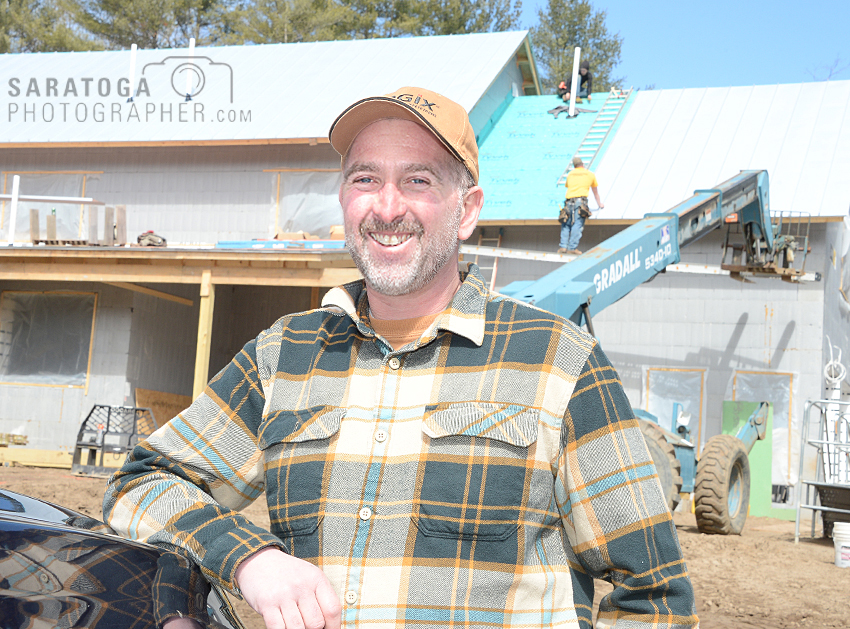
©2017 Saratoga Photographer.com
By Jill Nagy
Insulated concrete forms (ICFs) that fit together like Lego blocks form the skeleton of the Net Zero energy-efficient homes built by Halfmoon Construction of Clifton Park.
The company’s president, Andy Ellis, explained that the forms, called Lodgix Blocks, are set and filled with concrete.
“It gives us a really good base for an energy-efficient house,” he said.
The blocks serve three functions. Ellis said they replace the plywood on the outside, replace the wall insulation inside, and go in place of the framing of a traditionally built structure.
The cost is 8 to 10 percent more than traditional construction but, he said, the cost is recovered in less than three years because of the resulting energy savings. The houses he builds can be finished with any type of siding on the outside and traditional wallboard on the inside.
Currently, the company is building a “100-year house,” with corrugated metal siding and a metal roof. “It won’t need any repairs soon,” he said.
The result will be a house with 12-inch walls, about double the traditional width. Windows and doors are set-in more and better defined and windows have wide sills. Otherwise, the house will not stand out from its non-sustainable neighbors.
The Lodgix Blocks are just one of the elements that go into the company’s passive solar-energy-efficient houses, said Ellis. The windows face south to soak up winter sun and overhangs are designed to minimize sun exposure in the summer time. Windows are triple-glazed glass and open up by tilting into the building. They are very airtight, Ellis said, and specific places are glazed to let heat come in and stay in.
Concrete slab floors collect energy during the day and radiate it back at night. Most people also want supplemental heat and that is provided by a geothermal loop in the ground (also called a heat pump) connected to a forced air system and a fan that circulates the air, he said.
Heat recovery ventilators bring fresh air into the house and modulate the moisture. The hot water is also provided by the thermal loop and has an electric coil as back-up.
The resulting house does not need any energy from a utility company. It is completely sustainable, he said.
The Net Zero concept is the new standard for the company, Ellis said. They no longer build traditional houses.
“It is hard to meet energy code requirements with traditional designs,” he pointed out. “I don’t want to do any more wood-frame structures. Once I saw my first ICF home [in Troy] I didn’t want to go back.”
Halfmoon Construction is currently completing their seventh passive solar house, in Rock City Falls in Milton. The company is currently installing the roof and utilities.
A house Halfmoon Construction built in Glenville was named the best large, residential structure by ICF Builders Magazine and will be featured in next month’s issue of the magazine.
In the most recent Capital District Parade of Homes, that house earned three of the seven awards. It won in the categories of energy efficiency and sustainability, use of innovative materials and best value.
Halfmoon Green Building was founded in 1999 by Ellis. The company builds two or three houses a year. It is a custom design-and-build company which promotes home projects that work within sustainable buildings and energy standards.
There are five full-time and two part-time employees. The company can be reached by telephone at 269-8619.
